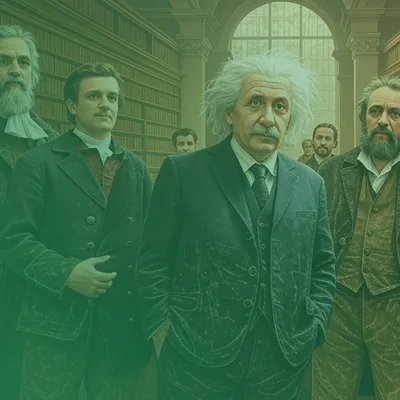On the morning of June 6, 1944, Allied troops poured onto the beaches of Normandy. D-Day would become the largest amphibious invasion in military history. What many people don’t know is that this monumental operation’s success hinged significantly on an elaborate deception campaign code-named “Operation Fortitude.”
The Phantom Army
In the months leading up to D-Day, Allied intelligence services created an entirely fictional military force: the First United States Army Group (FUSAG). This phantom army, supposedly led by General George S. Patton.
The deception wasn’t merely paperwork. Physical evidence was meticulously arranged across the English countryside:
- Thousands of inflatable rubber tanks and plywood aircraft were positioned to be visible to German reconnaissance flights
- Canvas landing craft lined the southeastern shores of England
- Elaborate networks of tents and temporary structures were erected to simulate military encampments
- Fake fuel depots and supply dumps were constructed
This theatrical set was designed with one purpose: to be photographed by German reconnaissance planes and convince Hitler that the main Allied thrust would come at Calais, not Normandy.
Communications Deception
The physical props were only part of the elaborate ruse. Allied forces created an extensive fictional radio network that simulated the communications of a million-man army. Teams of operators maintained round-the-clock radio traffic between non-existent units, creating an audio illusion of massive military preparations.
The radio transmissions followed established military protocols and procedures, making them indistinguishable from genuine communication. The volume and pattern of these messages were carefully calibrated to reinforce the impression of a major force preparing for imminent action.
The Double Agent Network
Perhaps the most remarkable aspect of Operation Fortitude was the network of double agents that delivered the deception directly to German intelligence. Spies who had been “turned” by British intelligence continued to communicate with their German handlers, feeding them a steady stream of information that supported the Calais invasion narrative.
The most effective of these agents was Juan Pujol García, code-named “Garbo.” Having built extraordinary credibility with German intelligence over years of service, Garbo’s reports were treated with the highest confidence by his handlers. On the morning of D-Day itself, Garbo transmitted a message of remarkable audacity—apologizing for failing to warn about the Normandy landings sooner, but assuring his German contacts that Normandy was merely a diversion before the real attack at Calais.
German intelligence not only believed this message but responded with gratitude for the analysis, requesting more details about the “real” invasion supposedly being prepared.
The Critical Decision Point
As Allied forces struggled to establish themselves on the Normandy beaches on June 6, German commanders faced a crucial decision: Was this massive assault the main invasion or a clever diversion?
Field Marshal Gerd von Rundstedt, Commander-in-Chief of German forces in Western Europe, recognized the need for immediate action. Military logic dictated deploying Panzer reserves to crush the Normandy landings before the Allies could establish a secure foothold.
However, Adolf Hitler had explicitly ordered that no Panzer reserves could be committed without his personal approval. Convinced by the elaborate deception that Normandy was merely a feint, Hitler kept his eyes fixed on Calais—exactly as Allied planners had hoped.
Hitler’s Fatal Hesitation
The evidence of the Normandy invasion’s scale mounted hourly. Yet Hitler dismissed these reports, insisting with absolute certainty that the real attack would come at Calais, led by Patton. The intelligence reports—carefully manufactured by Allied deception teams—confirmed that Patton’s army group remained in England, apparently preparing to strike.
This hesitation—this fatal delay—was Operation Fortitude’s crowning achievement. While Allied soldiers secured their positions on the Normandy beaches, powerful German forces that could have pushed them back into the sea remained stationed 150 miles away, awaiting an attack that existed only in Allied imagination.
Maintaining the Illusion
For the deception to succeed, it had to evolve alongside battlefield realities. As days passed with no Calais invasion, Allied intelligence shifted their narrative. The phantom First United States Army Group under Patton was now described as being held in strategic reserve for a second invasion.
A carefully constructed series of excuses—bad weather, logistical challenges, the need to assess Normandy developments—explained the delay in launching this “second invasion.” The physical elements of deception remained in place, radio traffic continued, and double agents maintained their reporting about the phantom army.
General Patton himself remained conspicuously absent from Normandy in the early weeks, reinforcing the fiction that he was preparing to lead another major assault elsewhere.
The Remarkable Impact
Operation Fortitude succeeded beyond its creators’ wildest expectations. For seven critical weeks after D-Day, Hitler kept significant forces stationed at Calais, awaiting a ghost army that existed only in Allied imagination. By the time German high command recognized their catastrophic error, Allied forces had secured their position in France and were preparing for the breakout that would eventually liberate Western Europe.
Military historians estimate that without Operation Fortitude, the Normandy landings might have faced dramatically stronger opposition, potentially altering the invasion’s outcome and prolonging the war. The operation’s success saved thousands of Allied lives and significantly accelerated the liberation of Western Europe.
Historical Legacy
Operation Fortitude stands as one of history’s most brilliant military deceptions. Its genius lay not just in creating an elaborate fiction but in crafting one that perfectly aligned with Hitler’s existing expectations. The Allies didn’t need to convince German intelligence that Calais was the logical landing site—Hitler already believed this. Fortitude simply reinforced and expertly exploited his preconceptions.
This operation proves that sometimes the most effective military actions aren’t those deploying the most soldiers or firing the most bullets, but those that most successfully manipulate the enemy’s understanding of reality. In quiet planning rooms far from the front lines, the course of World War II was forever altered by an army that achieved its greatest victory by never existing at all.
Key Figures Behind the Deception
While many of Operation Fortitude’s architects remained anonymous for decades due to classification, we now know some of the key figures involved:
- Lieutenant-Colonel David Strangeways, who headed the physical deception planning
- Colonel John Bevan, Chairman of the London Controlling Section responsible for strategic deception
- Juan Pujol García (Agent Garbo), perhaps the most effective double agent in the operation
- Colonel R.M. McLeod, who coordinated the overall Operation Fortitude
Their combined efforts created what remains history’s most successful large-scale military deception—a phantom army that helped secure Allied victory by existing only in the mind of the enemy.


